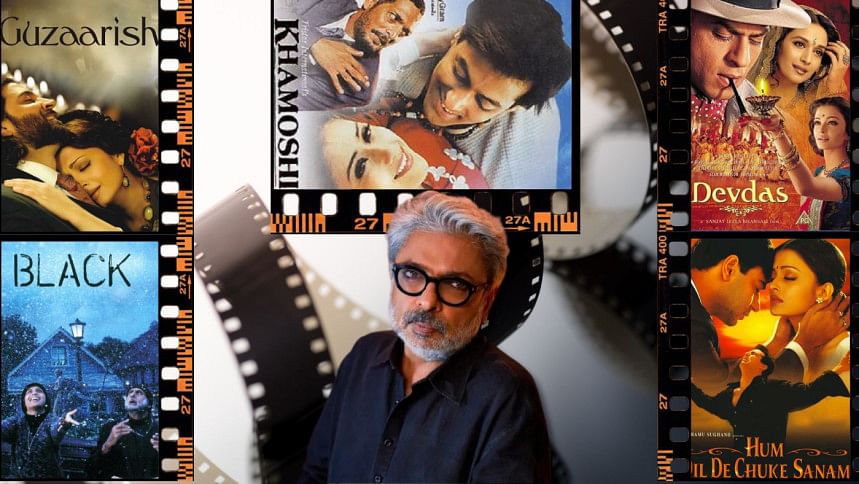Sanjay Leela Bhansali: The Master of Grandeur

Sanjay Leela Bhansali has made a name for himself as a composer, visionary, myth-spinner and lover of all things grand. The National Award-winning director is someone whose ambitious works, most of which are larger-than-life, take audiences to whole different universes. His films combine operatic language with impassioned desires to create a gorgeous universe that makes you wish it actually did.
On the 60th birthday of Bhansali, we take a look at some of his noted works over the years.
Khamoshi: The Musical (1996)
Khamoshi is the first film of Bhansali which is about the beautiful vulnerable Annie (Manisha Koirala) trying to cope with the possessive demands of her deaf and mute parents (Nana Patekar, Seema Biswas) is still his most honest work. The dark passionate redemptive tale was rejected back in the time when it was released. However, with her porcelain looks and delicately nuanced performance, Manisha immortalized herself. The music is mesmerizing, the plot is engaging, and the performances are tender. Khamoshi might be his most grounded effort but his flair for ambitious storytelling is peeking through.
Hum…Dil De Chuke Sanam (1999)
A cinematic gem, the love story stars Aishwarya Rai Bachchan as Nandini, a young girl who's torn between the love of her life, Sameer played by Salman Khan, and the man she is married to Vanraj (Ajay Devgn). In the first half of the film, the young and carefree love is symbolized by vibrant colors which then go on to become somber monotones in the second half depicting the mood of the characters in the film, something that only Bhansali could have thought of.
The film was a commercial success, but it also won audiences' hearts, and it is still regarded as one of the best pieces of work by the director.
Devdas (2002)
The movie, which was adapted from a novel by Sarat Chandra Chattopadhyay, was regarded as one of the grandest in Indian cinema and served as that year's official entry for India at the Oscars. For his leading actresses, played by Aishwarya Rai Bachchan as Paro and Madhuri Dixit Nene as the courtesan Chandramukhi, the director chose rich, bridal tones of reds, greens, blues, and golds throughout the entire movie but opted to use muted colors to portray Shah Rukh Khan's creeping self-destruction in his graduation scenes.
Black (2005)
Many consider "Black" to be the minimalist counterpart to Bhansali's previous film, "Devdas," which was extravagant. Nothing could be further from the truth. Behind the political correctness of the issue, the movie screamed with epic delight in every frame even though it was an outwardly gloomy tale about the relationship between a girl who is physically challenged or has extraordinary abilities and her teacher. The movie "Black," which starred Rani Mukherjee and Amitabh Bachchan in central roles, was a breathtaking ode to the spirit of resiliency and determination, done in vibrant hues. Bhansali used a color palette of blacks, greys, blues, and whites throughout the movie instead of his usual preference for joyful hues so that it conveys everything that needs to be said about the world of his central protagonist. Even the snowflakes were measured in their beauty.
Guzaarish (2010)
Bhansali's third and last film about the desperate longings of the physically disabled, this one starred Hrithik Roshan in a stellar if somewhat all-knowing performance as the paraplegic who would rather die than remain progressively dependent on his beautiful nurse, played by Aishwarya Rai. The director's use of scene cuts to highlight the fugitive fears of a protagonist on the verge of disaster is something to be commended. Director Sanjay Leela Bhansali and his cinematographer (Sudeep Chatterjee) have assembled a collage of captivating paintings on screen that combine the exterior of a blazing Goa scene with the interior of a collapsing home.

 For all latest news, follow The Daily Star's Google News channel.
For all latest news, follow The Daily Star's Google News channel. 









Comments